pre memoday
One week before memoday, bots started to generate conversation in pro Trump group, contributing 18.9% of all tweets in our collection. 88% bots came from pro Trump group, and 12% came from anti Trump group.
On Feb. 2, 2018, the United States House Intelligence Committee Chairman Devin Nunes released a controversial memo.
At the same time, a hot debate between pro Trump and anti Trump groups were happening on Twitter.
Here we present the dynamics of those two groups from three datasets: pre memoday, memoday, and post memoday. We used state-of-the-art unsupervised bot detection protocol to identify and quantify bots.
In each dataset we show three tweet-retweet social network graphs in series: accounts without bots and verified users, accounts with bots but without verified users, and all accounts.
Normal accounts are colored purple blue, normal bots are colored orange, influential bots are colored red, and verified accounts are colored green.
One week before memoday, bots started to generate conversation in pro Trump group, contributing 18.9% of all tweets in our collection. 88% bots came from pro Trump group, and 12% came from anti Trump group.
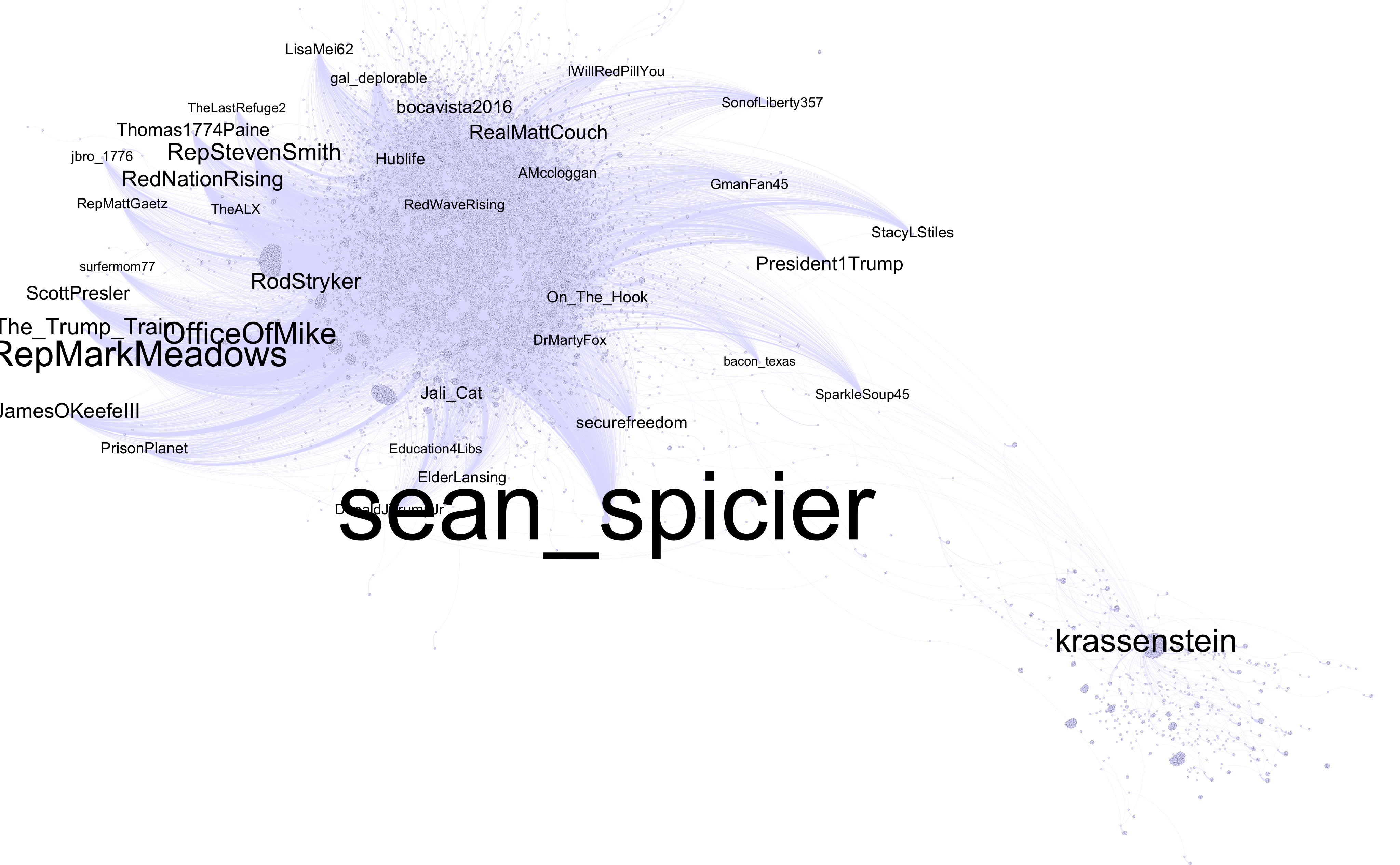
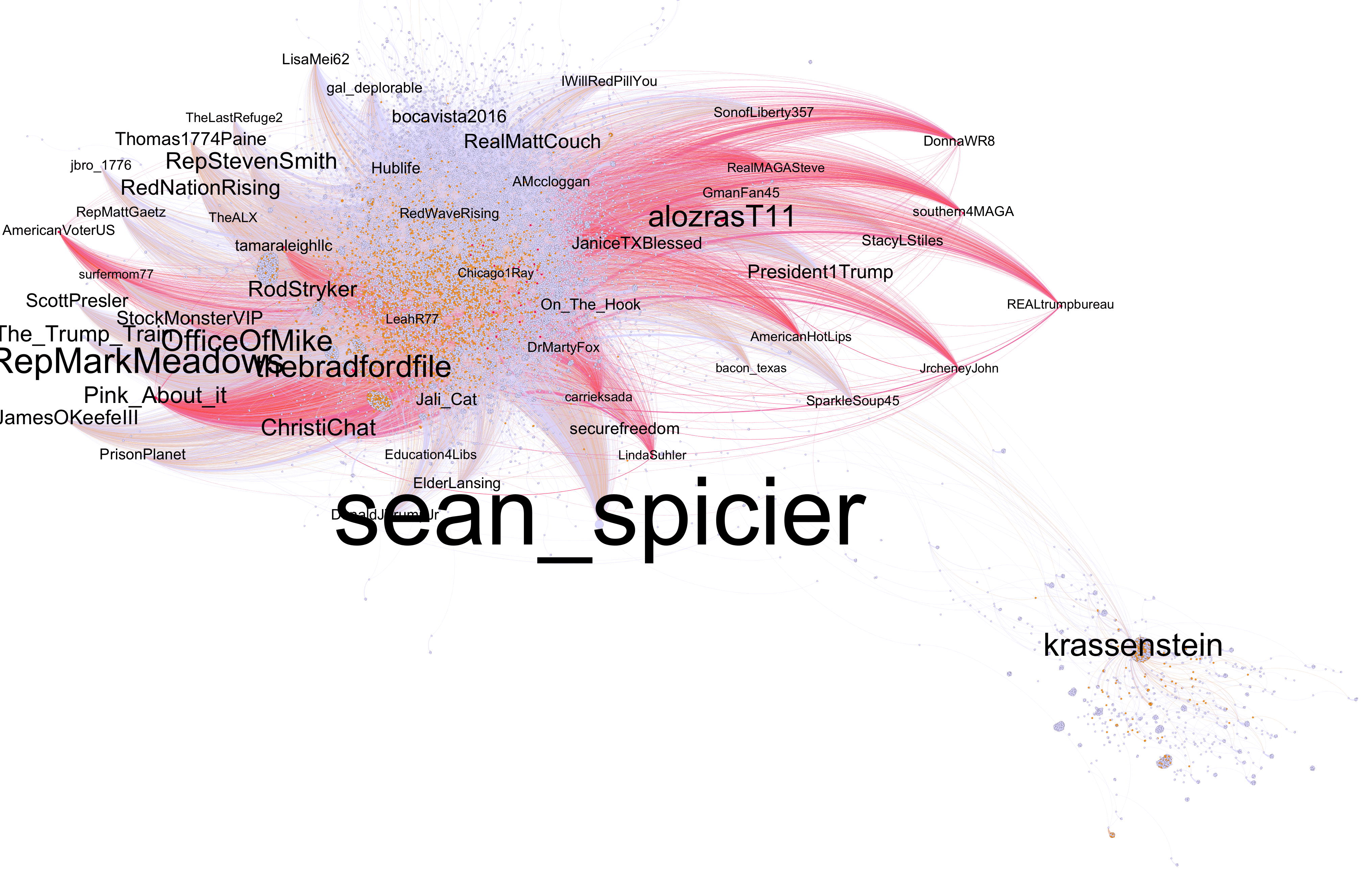
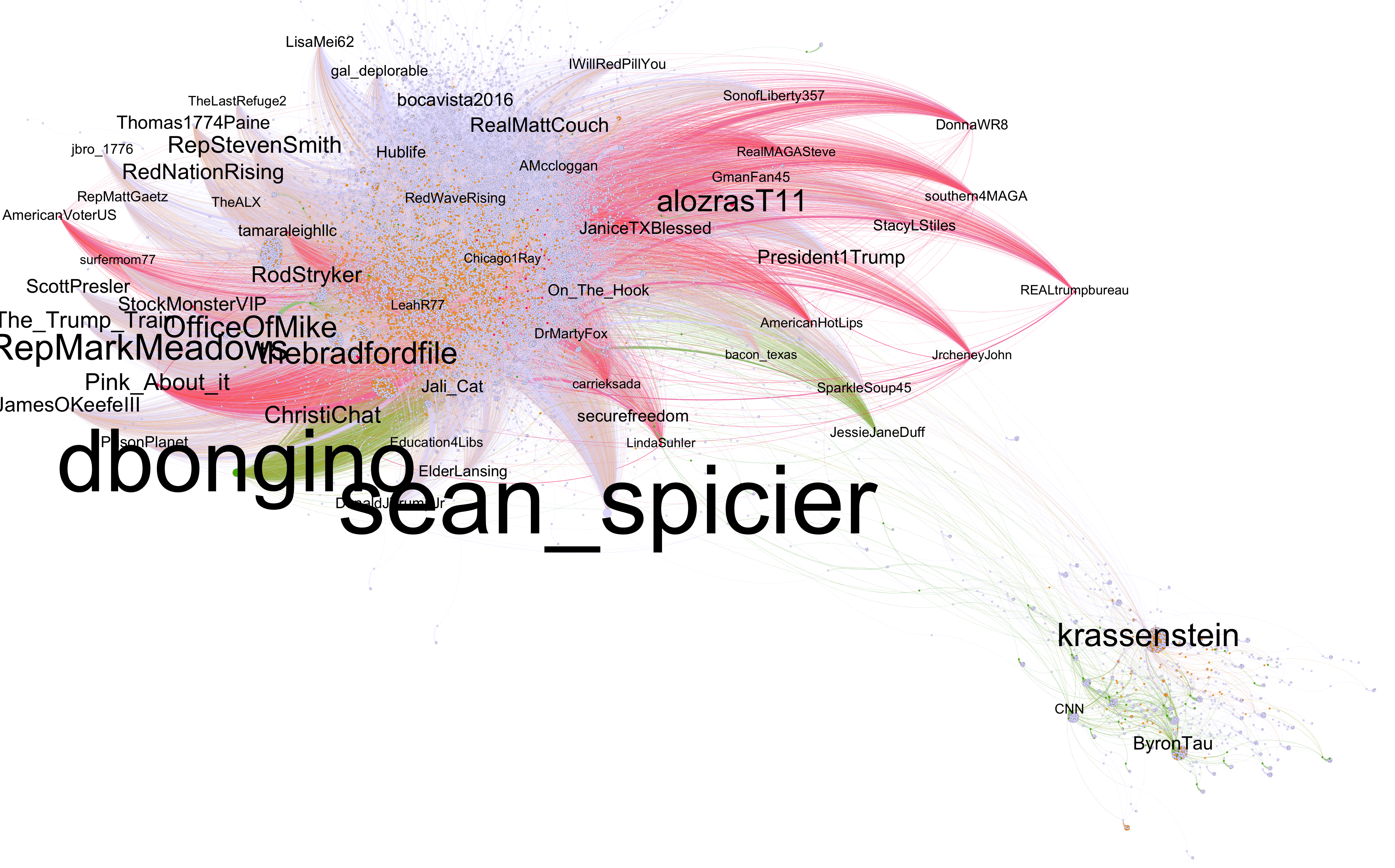
Bot activities reached a peak, with 26.7% of all tweets coming from bots. 68% bots came from pro Trump group, and 32% came from anti Trump group.
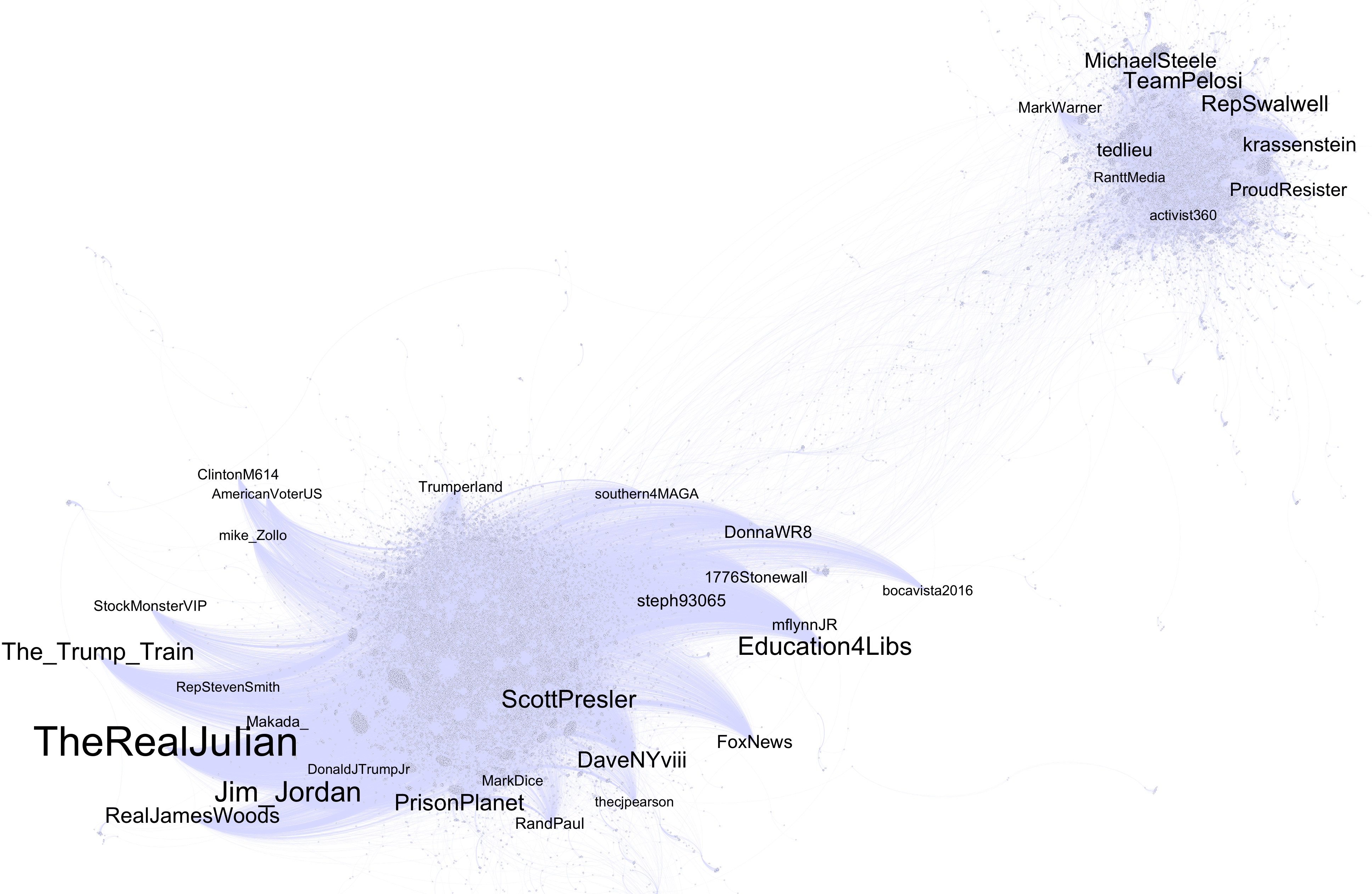
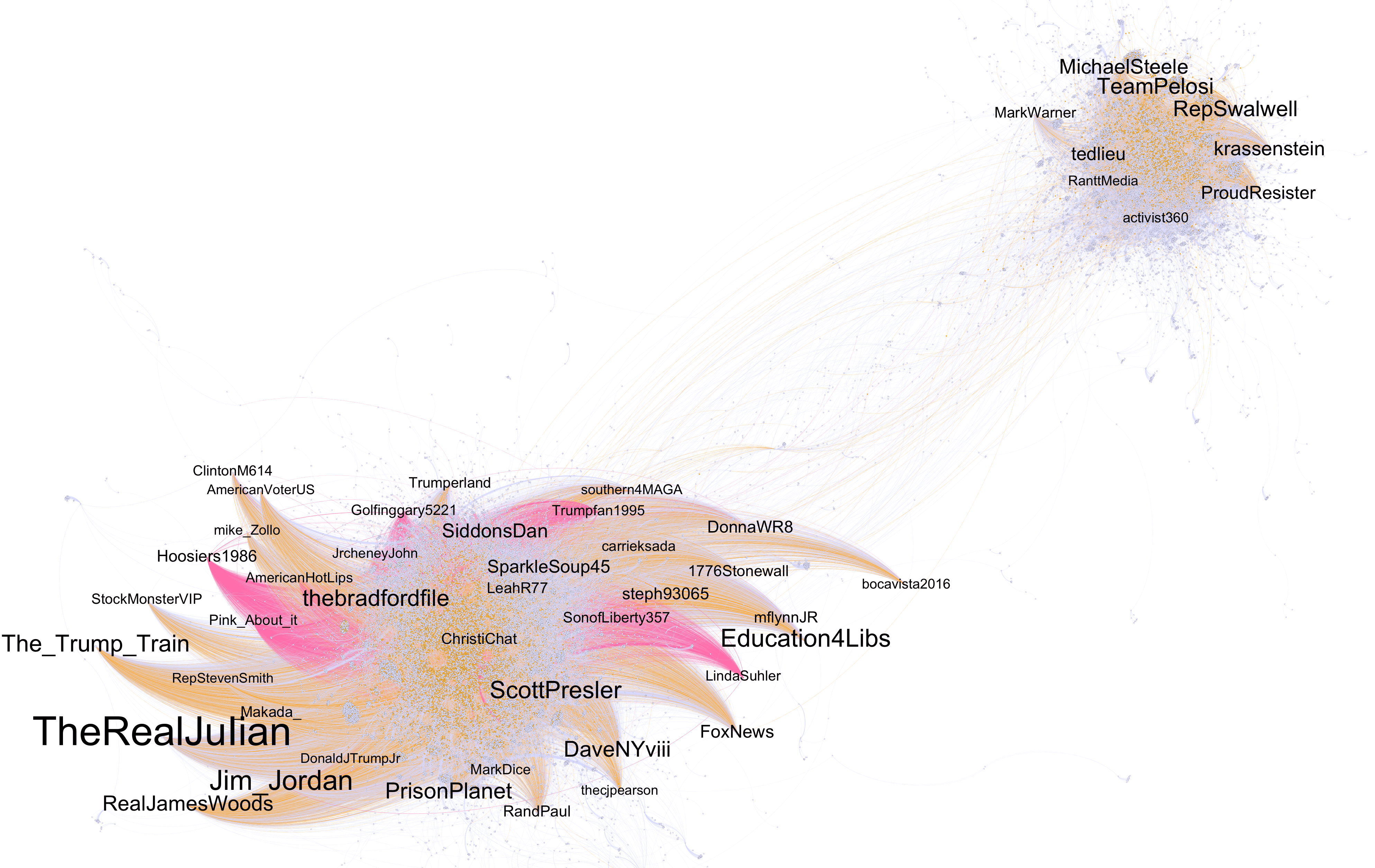
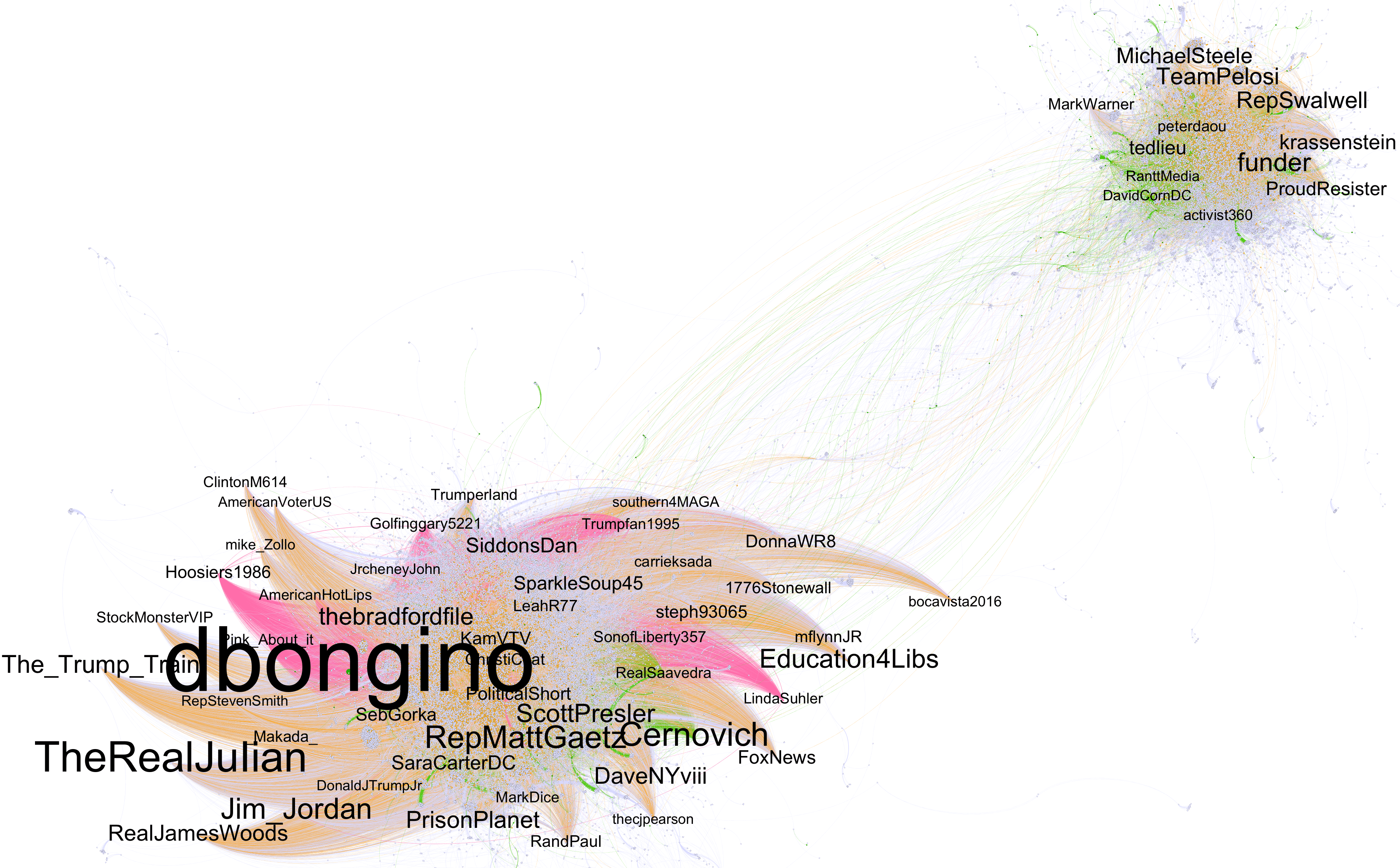
Bot activities started to fade, with 15.9% tweets coming from bots, the lowest among all three datasets. 55% bots came from pro Trump group, and 45% came from anti Trump group.
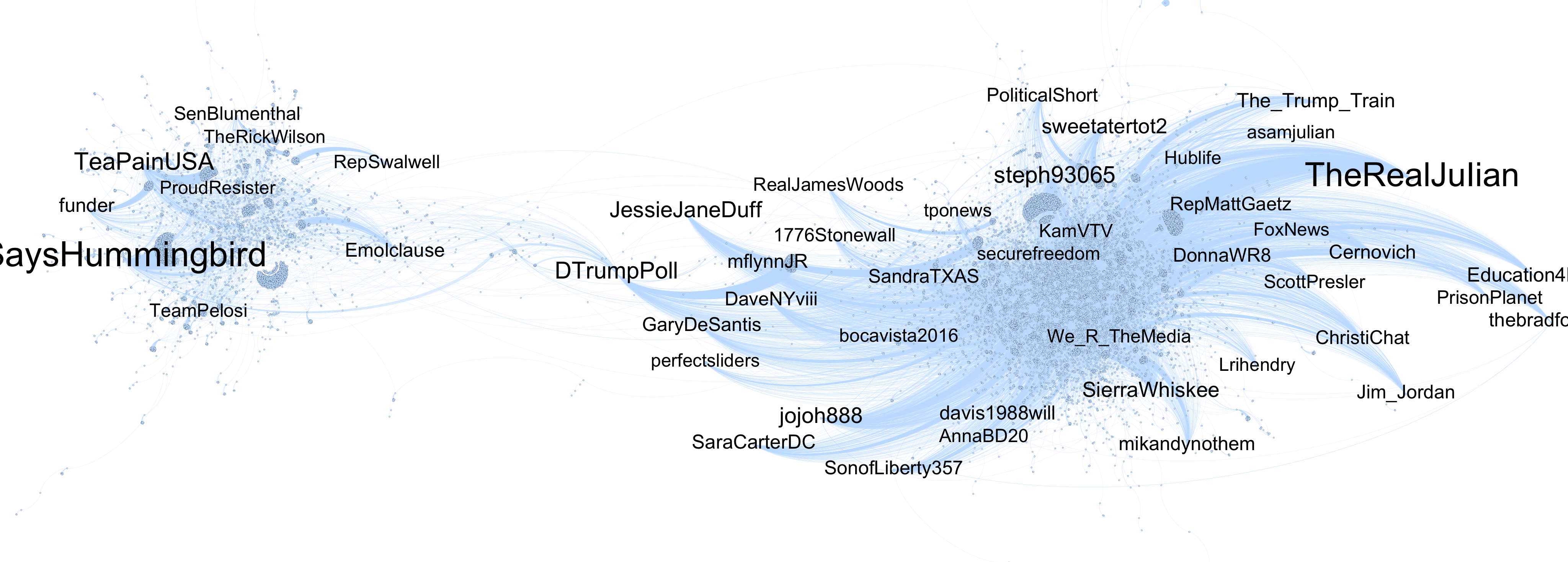

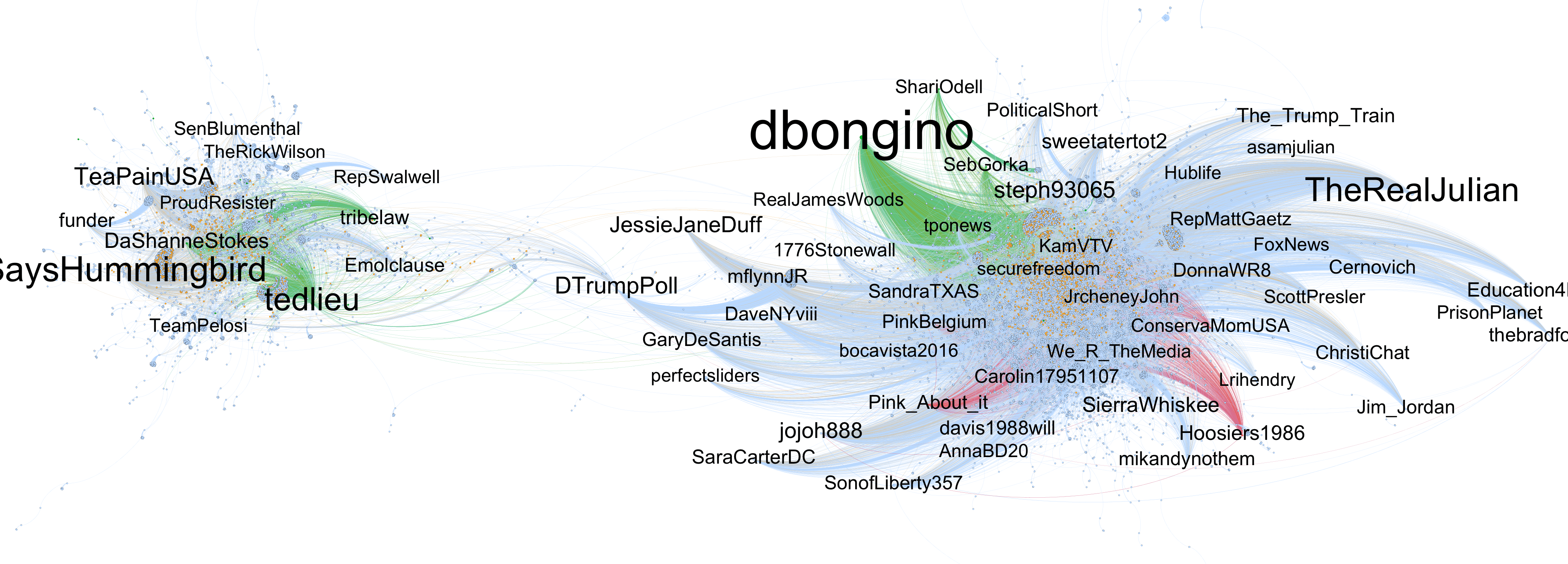
Zhouhan Chen zc12@rice.edu
Advisor: Professor Devika Subramanian devika@rice.edu
Copyright © 2018